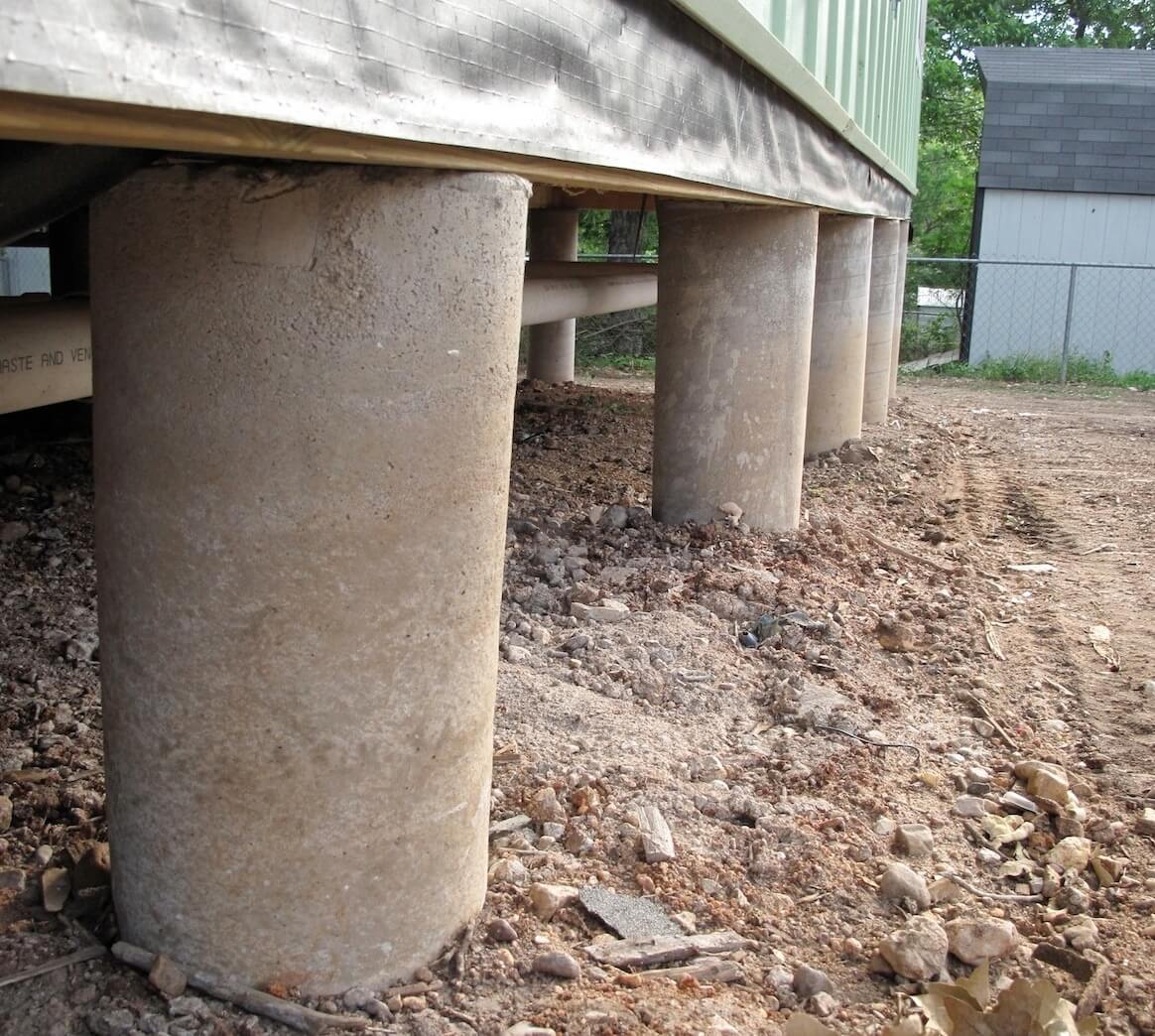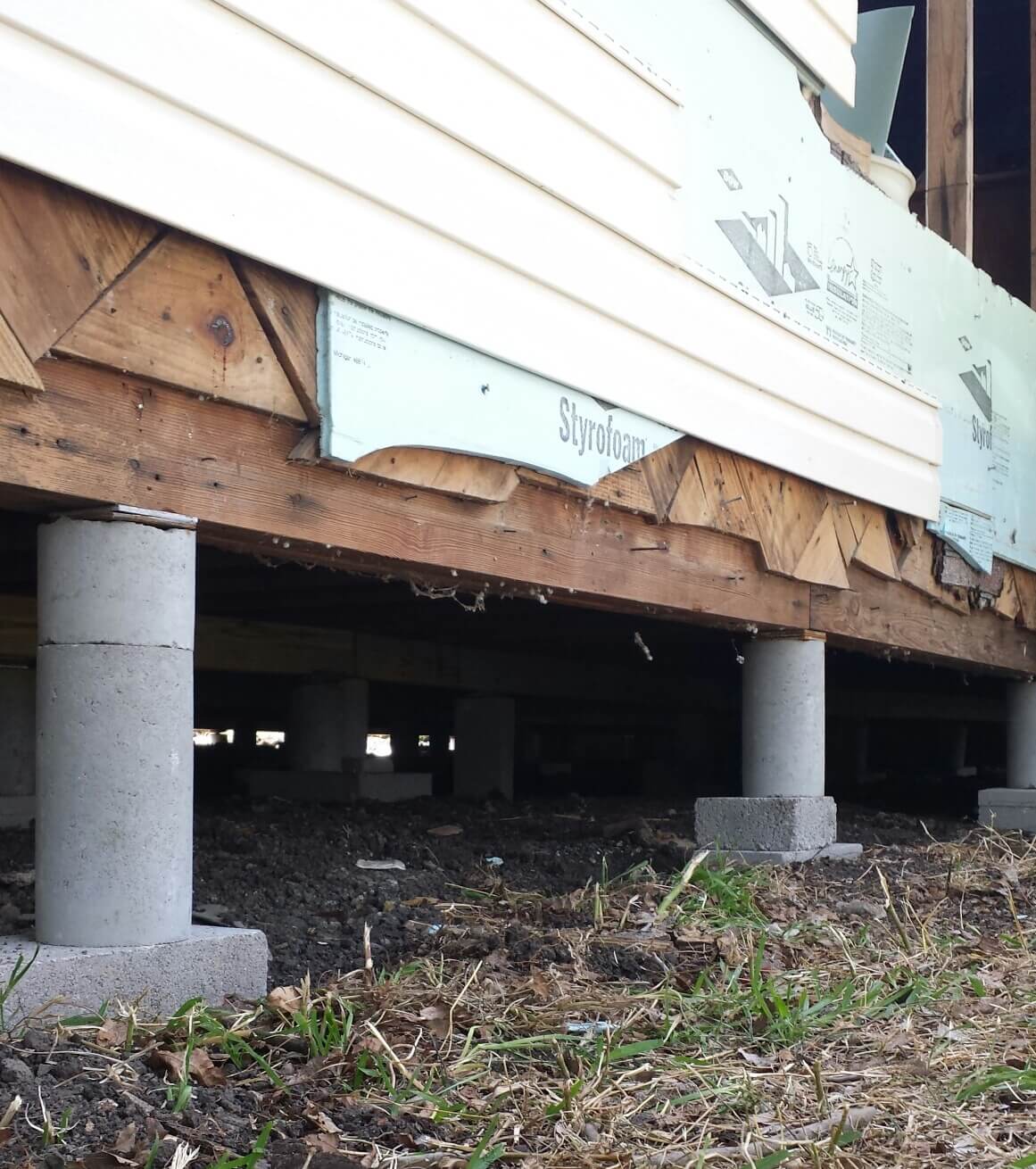Enclosing a pier and beam foundation helps protect your crawlspace from insects, reduce heat loss through floors and more. Read on to learn about this type of foundation and get tips on how to enclose a pier and beam foundation to protect your property, as well as make it look more visually appealing.
Pros and Cons of Pier and Beam Foundations
Pier and beam foundations are popular among homeowners and builders for many reasons. For one, since the home is elevated to approximately 18 inches, the foundation provides some protection from minor flooding. Other benefits include:
- Easy access to electrical and plumbing components for serving and repairs.
- Relatively cheaper excavation costs.
- Ability to be used even on uneven surfaces and slopes.
The disadvantages of pier and beam foundations originate from the crawlspace. This area, if left open, can encourage infestations of insects, rodents and other harmful pests. The crawlspace is also prone to dampness, leading to mold and mildew growth. In some cases, installing drainage is needed to funnel water away from the foundation.
Heat loss may also be an issue during the colder months, driving up energy bills. This is especially true if the foundation and the flooring area are not insulated. Fortunately, these disadvantages can be addressed by enclosing the pier and beam foundation.
How to Enclose a Pier and Beam Foundation
For this project, you’ll need pressure-treated plywood. Pressure-treated plywood is a material commonly used to enclose pier and beam foundations. Its many benefits include:
- Resistance to wet and dry rot.
- Resistance to harmful insects such as termites and carpenter ants.
- Versatility, as it is available in a wide range of finishes.
Some manufacturers of pressure-treated plywood boards also infuse certain chemicals in the lumber that make them fire-retardant. Using this material means a faster, simpler installation process than concrete, which takes a long time to dry.
A contractor or foundation expert will best know how to enclose a pier and beam foundation. However, if you want to do the project yourself or are simply interested in the process. The following are the general steps:
- Using a shovel, dig a channel between two foundation beams. Make sure that the channel is at least 12 inches deep.
- Using a tape measure, determine the distance between the two foundation beams. Then, measure the height from the bottom of the channel to the top of the rim joist.
- Place the plywood board into the channel and nail it into place at the top of the rim joist.
- Fill the channel with gravel until it’s level with the surface.
- Repeat steps one to five until the entire foundation has been enclosed.
Note that if you live in a cold climate or if the soil type on your property contains a lot of clay, you will likely need to install a drain.
How to Make the Enclosure More Visually Appealing
While plywood is resilient and durable, it’s not especially attractive on its own. However, there are many ways you can improve its appearance. The following are some examples:
Paint It
A simple solution is just to paint the plywood enclosing your foundation. Opt for paint that is formulated specifically for outdoor applications. For example, acrylic latex paints are ideal for exterior plywood surfaces. Don’t forget to apply primer before painting, and apply at least two coats for longevity.
Install Stone Veneer Cladding
Stone veneer can be made from natural stone, simulated stone or a combination of both. As cladding, it is lightweight and easy to install while giving the appearance of solid stone. It’s also less expensive than natural stone.
Apply a Stucco Finish
Stucco is a cement-based construction material that delivers a textured finish when applied to your foundation’s enclosure walls. It comes in a variety of colors and has two systems: one-coat and three-coat. The former is easier to apply, while the latter offers more strength and durability.
Important Considerations Before Breaking Ground
Unless you’re confident in your ability to work with wood and willing to do a bit of digging, it is best to entrust the job to professionals who know how to enclose a pier and beam foundation the right way.
A foundation specialist can do the job much faster and ensure safe and excellent results. They will also let you know if your planned enclosure complies with relevant building codes or if any changes need to be made. This gives you peace of mind.
The Pier and Beam Foundation Experts
HD Foundations is the go-to company for foundation repair and drainage installation in Texas. To learn more about our services or request a free estimate, contact us today.


